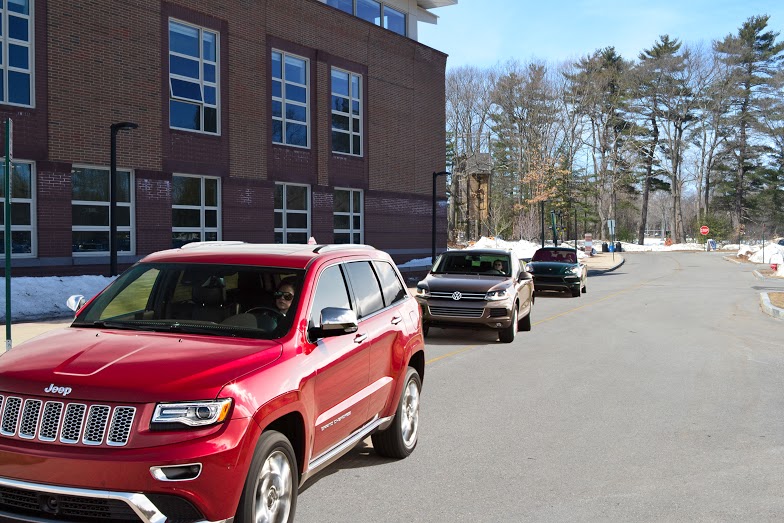Welcome to the United States, home of wide open plains and long stretches of uninterrupted highway that criss-cross the nation’s borders. Thanks to the planning of the Eisenhower Administration in the 1950s, this country provides limitless opportunity for the driver. Be they high school students with a learner’s permit or professionals with years of training under their seatbelt, the roads of the United States provide the driving population with unparalleled opportunity due to years of intelligent planning behind our federal highway system. Thus, it is safe to assume that the drivers taking advantage of these opportunities are equally intelligent.
This intelligence emerges quite clearly in the choices we make as consumers when we purchase cars in America. It seems only logical that we choose cars that have more seats than there are members of our extended family when selecting between makes and models. Luckily, vehicles like the almost-19 foot Chevy Suburban or the seven-foot high Toyota Sequoia ensure that there’s plenty of room for extra oxygen in the cabin space. Don’t be fooled; this surplus oxygen supply is important to have as the air quality of the outdoors decays around your vehicle.
But consumers should be sure to have all their bases covered. A healthy and consistent destruction of the planet’s atmosphere is unarguably necessary to ensure that all consumers feel the need to enjoy the oxygen supply that they’ve put aside within their vehicle. What better way for them to acknowledge said appreciation than by running inside their cars for fear of acid rain and airborne diseases produced in the over 40 hazardous chemicals released by their vehicle’s exhaust? One can also be sure they’re generating enough poisons on a regular basis to produce this effect by making regular visits to the gas station. At a mere cost of only $2,384 annually, the gas a car is filled with will get one as far as work and back on only a three dollar gallon and 18 pounds of carbon dioxide.
What many people do not realize is the importance of producing as much acid rain, airborne diseases, increased average temperatures, and fossil fuel consumption as possible. If any of these deterrents were not constantly being added to by the hundreds of thousands of people driving gas-guzzlers on the road every day, then the ensuing chaos would be catastrophic. People would see the outdoors as safe and hospitable to spend time in, and possibly start walking or biking between points of travel. The only way to prevent such a disastrous mess for the owners of corporate America and thus the American economy is to pollute as much as possible in order to force people back into their air-filled SUVs.
One of the best places to carry out the aforementioned public service to our economy is in the regular carpool to and from academic institutions, such as the high school. Rather than consolidate more than one person into a vehicle, it makes significantly more sense to separate each into his/her own nine-person SUV and have them drive separately. Furthermore, it takes very little time to drive (instead of take the five minute walk to school), so why not save that extra energy of walking? Of course if I reach my destination but am not ready to park, I should keep my engine running in order to continue the exhalation of toxins into the air and increase our dependency on the confined clean air within our vehicles. This combination of increased demand for vehicles along with further destruction of the atmosphere presents a valuable support structure from an economic standpoint.
Although it may sound unbelievable, there are actually some places in the world that follow a less intelligent system of vehicular management than this. In Europe, cars oftentimes only fit the number of occupants who ride at a given time. Even worse, Europeans have the nerve to drive cars that run on electricity and don’t release any toxins from fossil fuel consumption. How is one supposed to adequately destroy the environment for the sake of the economy without the tools to do so at their feet? Smaller streets? More foot traffic? All of these ideas seems conducive to an environmentally-conscious driving populace; for fear of economic disaster, we can’t have that.
Hence, I propose a new set of regulations for the benefit of our economy’s sustenance and thus our livelihood. First, it should be put forth that in the case of the school transportation, we should require that all students travel to class each morning in individual cars that seat at least three times the number of frequent passengers in each vehicle. That way a heavy demand for large SUVs will continue to provide funds to the American economy. Furthermore, we should ban travel by foot or bicycle, as the chaos produced by a multitude of travelers crossing the streets poses the risk of harming or endangering the drivers of SUVs, and thus weakening the sales of large SUVs. Finally, it is ultimately necessary that we drive cars that produce the most contaminants necessary; this will ensure an ever-growing population of SUV-drivers by forcing them to stay within the sheltered cocoon of their car, fostering a permanent dependence of the American consumer on the large SUV in his/her transportation needs.
(Matthew Hornung ’16, Media Director)

